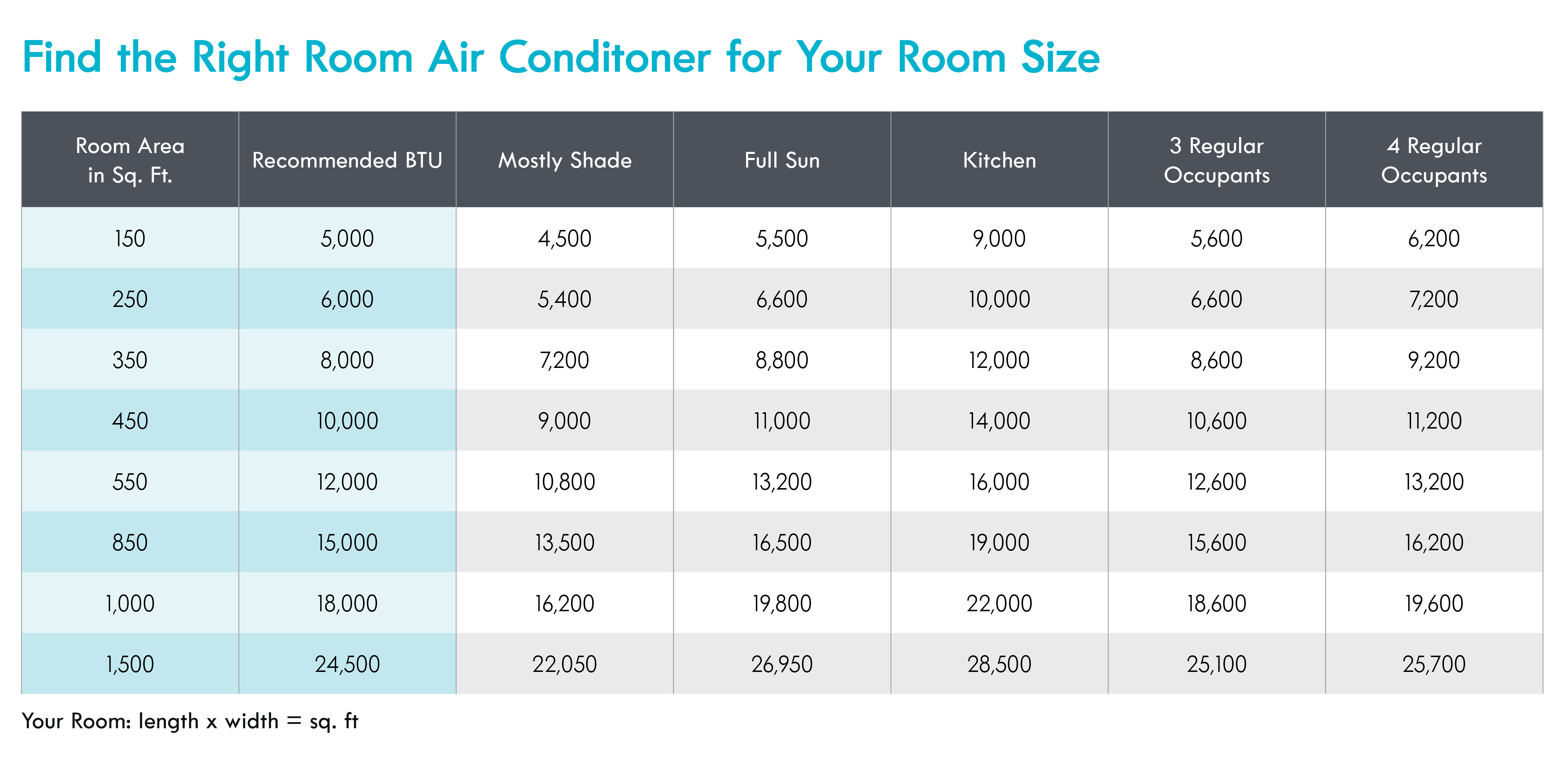
Believe it or not, summer is just around the corner. And in the sticky heat and humidity of the coming months, you’ll be looking for as many ways as you can find to stay cool. Pools, ice cream, handheld fans and ice on the back of the neck are all fine and good. But the real champion of summer is your room air conditioner.
Before you can enjoy the cool, crisp airflow, however, there are a few factors to consider (there’s a lot more heft to air than you might realize). Like any heavyweight pro, your air conditioner, whether portable, window-mounted or through-the-wall, needs to bring the right size, power and efficiency to the cooling game.
We get it. Purchase decisions can be a bit overwhelming. That’s why we created this 4-step, no-sweat buying guide. Check it out before you buy to make cooling your house a breeze.
Step 1: Size Up the Situation
Buying the right air conditioner for your needs all starts with British thermal units, or BTU, which measure an air conditioner’s cooling power. Ratings typically range from 5,000 to 20,000 BTU — with a spread like that, it’s important to get the numbers right for the space.
A unit with too few BTU will struggle to cool the room, and a unit with too many will cool the room too quickly and be forced to cycle on and off, wasting energy and failing to dehumidify the air. But if you hit the mark just right, you’ll be perfectly comfortable with the temperature — and your utility bill! (We’ll just call this the “GoldiLocks and the Three Bears” approach to air conditioners.)
So how do you figure out the ideal power for your room size? A good rule of thumb is 20 BTU per square foot of living space. First, calculate the square footage of the room by multiplying its length by its width.
Next, multiply that number by 20 … or just consult our quick chart below for the corresponding BTU.
Step 2: Do the Math
Sorry, there’s more math. The number you have right now is a good benchmark, but you also need to consider things like ceiling height, door and window size, insulation, sun exposure, room location and climate. If necessary, make these additional estimates:
- For heavily shaded rooms, reduce BTU by 10%; for excessively sunny rooms, increase BTU by 10%.
- If the unit is for the kitchen, increase capacity by 4,000 BTU.
- If more than two people regularly occupy the room, add 600 BTU per additional person.
- Check your outlets. Large room units rated at 115 volts may require a dedicated circuit; 230 volts may require a special circuit.
- Measure the height and width of your window or wall to ensure the dimensions of your unit will fit.
Step 3: Run It Right
To get the most bang for your buck, make sure your new air conditioner is properly installed and operated. Energy.gov offers the following tips:
- If you’re mounting your air conditioner near the corner of a room, check that the airflow is directed toward the center of the space.
- Don’t place lamps, TVs or other heat sources too close to the air conditioner’s thermostat. The unit will run longer than necessary and waste energy.
- Set the thermostat as high as comfortably possible in the summer (shoot for 78°F). The smaller the difference between the outdoor and indoor temperatures, the more energy you’ll save.
- Don’t lower the temperature significantly when you turn on the air conditioner — it won’t cool the room any faster.
- On humid days, set the fan speed on low. The languid movement will remove more moisture from the air and cool your home more effectively.
- Consider using an extra interior fan to better spread the cooled air around the space.
To really maximize the efficiency of your room air conditioner, ensure that your home is well insulated and air-sealed. Read more from energy.gov on home energy audits and detecting air leaks.
Step 4: Go Smart. Get Efficient. Stay Chill.
Speaking of efficiency, a room air conditioner’s output is measured by the energy efficiency ratio (EER); the higher the rating, the more efficient the product and the lower the greenhouse emissions and monthly electric bills. You can’t get more economical than ENERGY STAR® certified units, which, according to energystar.gov, use 10% less energy on average and cost just $70 per year to run.
Not only is the brand-new Kenmore Elite® smart air conditioner lineup ENERGY STAR certified, but it allows you to cool your space whenever you need to, from almost anywhere. Monitor and control your air conditioner right from your smartphone to save energy and ensure your home is comfortable for pets when you’re gone and for you when you return! Now you have total control right at your fingertips.
So what do you say? Do the math, run it right and go smart to stay chill…because when the going gets hot, the hot turn on the AC.






